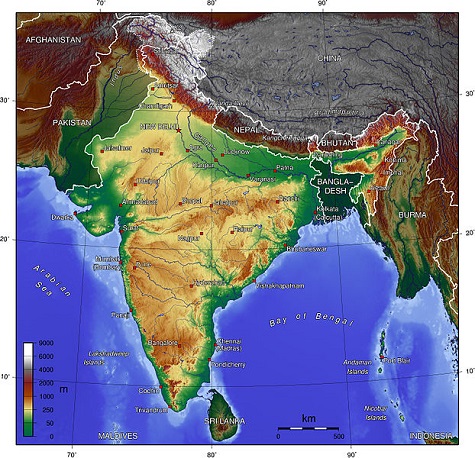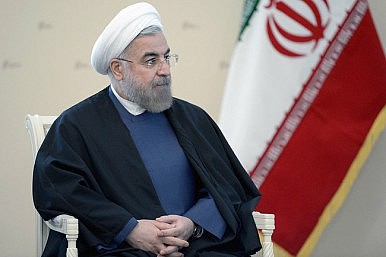By Syed Qamar Rizvi.
Geopolitics via CPEC
The China-Pakistan economic corridor is a significant bilateral agreement which has the potential to reconfigure the geopolitics of the South Asian region. China is set to invest $46 billion in this economic corridor which runs from Gwadar, a deep sea port in the province of Baluchistan in Pakistan to Kashgar in China’s northwest province of Xinjiang with roads, railways and pipelines. The Gwadar port lies on the conduit of the three most commercially important regions namely – West Asia, Central Asia and South Asia.
China-Pakistan growing strategic partnership
Meanwhile, China’s interest in deepening involvement with Pakistan is neither new nor particularly difficult to understand. With the United States having ended official military operations in Afghanistan in 2015, its interest in the region has declined somewhat, and China has effectively stepped into the vacuum created by America’s diminishing interest in Pakistan and the Asian subcontinent.
Thus, the East Asian nation has increased its long-term economic and strategic interest in Pakistan with the aim of strengthening its position in the world. In accordance with this overall strategy, China’s political leaders have been prepared to invest in Pakistani infrastructure, a decision which has obviously met with approval in the country that has struggled with economic and terrorism-related issues in recent years. The question which would obviously arise for policymakers in Washington is how this project will affect American interests in the region.
Geostrategic significance
It is expected to become a terminus point for trade and energy corridor emanating from the Central Asian Region. Operational control of this port gives the Chinese strategic and geopolitical advantage for the following reasons: First, the port is strategically located not far from the Strait of Hormuz and at the mouth of the Persian Gulf. Second, the Chinese face
considerable economic and strategic challenges from the US presence in the Asia-Pacific and the Gwadar port will provide a listening post to keep a tab on the US naval activities 460 kilometres further west from Karachi and away from the Indian naval bases. Third, the Chinese have expedited the process of developing Gwadar around the same time as US announced withdrawal of forces from Afghanistan, thus allowing them to conduct economic ventures in Afghanistan and other Central Asian countries. The Chinese aim to use Pakistan as a pipeline corridor to procure oil and gas from West Asian countries, especially Iran.
The growing Chinese benefits
Much is being said about the $46bn worth of Chinese investment coming into Pakistan. Although all analyses are speculative in tone, there is the understanding that this presents Pakistan with an opportunity to end its chronic power crisis and put its economy back on track. China, with its ever-increasing wistfulness to link up with Central Asia, the Middle East and Europe, is planning to go ahead with its long-planned economic corridor known as the China Pakistan Economic Corridor (CPEC).
This cohesive plan to develop Pakistan into an economic and energy hub entails coal, hydro, solar and wind plants. The corridor is a link between the prospective Northern and Southern Silk Roads that China is heavily focusing on in order to establish a transit for its manufactured goods all the way to Europe, the Middle East and Africa respectively.
This will allow China to monitor the vulnerable sea lines of communication as 60 per cent of its crude supply comes from West Asia. Moreover, most of its supply will be moved through this port which will save China millions of dollars, time and effort. This in a way will help reduce its dependence on the Strait of Malacca. China has also shown interest in joining the US$7.4 billion Iran-Pakistan gas pipeline, a project that faces stiff opposition from the US.
Russia and the CPEC
Perverted in the Western imagination as a backwards land of terrorism and poverty, the mainstream media myth about Pakistan carries little factual weight and purposely neglects the country’s rising geopolitical importance in Eurasia. Far from being a lost cause, the country is actually one of the supercontinent’s most important economic hopes, as it has the potential to connect the massive economies of the Eurasian Union, Iran, SAARC, and China, thereby inaugurating the closest thing to an integrated pan-Eurasian economic zone.
Russia recognizes Pakistan’s prime geopolitical potential and has thus maneuvered to rapidly increase its full-spectrum relations with the South Asian gatekeeper. Russia’s overarching goal, as it is with all of its partners nowadays, is to provide a non-provocative balancing component to buffet Pakistan’s regional political position and assist with its peaceful integration into the multipolar Eurasian framework being constructed by the Russian-Chinese Strategic Partnership.
The Indian factor
South Asia’s geopolitics were transformed by the end of the Cold War and the subsequent nuclear bipolarity that arose between India and Pakistan. The conclusion of the global ideological stand-off lessened the intensity of the Russian-Indian Strategic Partnership and the US’ dealings with Pakistan, as South Asia was no longer seen as a priority area of foreign policy focus by either superpower after that time. As a result, India began to drift westward at the same time that Pakistan was moving eastward, with New Delhi looking towards Washington while Islamabad embraced Beijing. This doesn’t mean that either of them completely turned their backs on their historical partners (Russia and the US, respectively), but that the changing global context forced them to adapt to a new reality of relations that continued the furtherance of their national self-interests.
 The Afghanistan factor
The Afghanistan factor
The completion of this CPEC project would also enable China to link up with its significant economic and oil interests in neighboring Afghanistan. It is thus of interest that the former Afghanistan president, Hamid Karzai, has recently explicitly warned China and Russia of dangers emanating from ISIS involvement in Afghanistan. It could be that China is moving to cement its interest in the region at the moment with the CPEC project, while one can also see Afghanistan being a significant theater of conflict in the future between the Anglo-American old word order and the new BRIC-based superpowers.
Thus, the CPEC project may not be particularly common knowledge in the Western world at the moment, but it will almost inevitably play a role in a wide variety of geopolitical issues that will play out on the world stage in the coming years.
The Environmental challenges
China’s aid is more focused on developing Pakistan’s energy and infrastructure sectors as can be seen from the multi-faceted approach adopted by the latter in its program. What remains to be seen is whether the possible environmental implications of heavy reliance on coal-based energy have been thoroughly evaluated and clearly communicated to the Chinese. Does Pakistan even have a disciplined, well-funded and efficient disaster management infrastructure in place to monitor the repercussions of this grand endeavor? Have the relevant stakeholders been a part of the negotiation and planning process to ensure that Pakistan safeguard itself against the associated risks? Being a third world country, Pakistan is perhaps more prone to the hazardous impact of climate change. Hence, it is important to integrate the environmental perspective whilst embarking on the ambitious plan.
The Baluchistan factor
The security landscape in Balochistan needs to be monitored in this regard since it is rife with militant and sectarian violence. Maintaining stability and order in the province is of paramount importance for the successful implementation of the CPEC. It is crucial thus, to work towards facilitating
the evolution of a more inclusive approach at the state level as far as enabling Baloch participation in the plan is concerned.
Iranian factor
As far as Iran is concerned, Chinese promises of extending the Iran-Pakistan pipeline all the way to the Xinjiang capital of Kashgar offers incentives to Iran to remain optimistic about this initiative: the gradual lifting of American sanctions from the country has infused hope and positivity.
The dynamic nature of the US-Iran relationship in contemporary times has also reinforced the idea that we are looking towards a future of new precedents vis-à-vis forming alliances and forging cooperation in the wake of converging interests and the desire for greater economic connectivity. The course of foreign relations today in terms of leanings and longevity may be much harder to predict as we make the transition towards a multipolar world.
It will be absolutely fascinating to watch how China and Pakistan, simultaneously, may be able to keep the peace in both Xinjiang and Balochistan to assure booming trade along the corridor. Geographically though, this all makes perfect sense.
Xinjiang is closer to the Arabian Sea than Shanghai. Shanghai is twice more distant from Urumqi than Karachi. So no wonder Beijing thinks of Pakistan as a sort of Hong Kong West.
This is also a microcosm of East and South Asia integration, and even Greater Asia integration, if we include China, Iran, Afghanistan, and even Myanmar.
The spectacular Karakoram highway, from Kashgar to Islamabad, a feat of engineering completed by the Chinese working alongside the Pakistan Army Corps of engineers, will be upgraded, and extended all the way to Gwadar. A railway will also be built. And in the near future, yet another key pipeline is in the offing.
This pipeline is linked to the corridor also in the form of the Iran-Pakistan (IP) gas pipeline, which Beijing will help Islamabad to finish to the tune of $2 billion, after successive U.S. administrations relentlessly tried to derail it
The geopolitical dividends of China blessing a steel umbilical cord between Iran and Pakistan are of course priceless.
A new heraldry of Pak-China epic relationship
Traditionally, China and Pakistan have had a relatively profitable relationship. For over half a century, diplomatic relations between the two countries were pretty warm and friendly. However, the recent unveiling of the 2,900 km China–Pakistan Economic Corridor (CPEC) during a visit to Pakistan by Chinese President Xi Jinping has had a significantly positive influence over the relationship.
Despite being encapsulated in never-ending security conundrums, Pakistan finally has a shot at emerging from murky waters. This has also propelled a number of other related questions. How the country’s security disputes with its neighbors figure into the equation is an important one.
The project in question is worth $46 billion, and involved as part of its remit is the construction of roads, railroads and power plants. This is an extremely broad-based infrastructure project, which will take 15 years to complete. Although this was a particularly significant landmark in Pakistan-China relations, it can also be seen in the wider context of numerous other agreements in the fields of military, energy and infrastructure in particular.
CPEC is one of numerous bilateral agreements being initiated in the world at the moment which is of geostrategic importance. CPEC is also buttressed by some earlier agreements between the two nations, ensuring that its qualitative importance is increased.
In April 2015, China was granted operation rights to the port of Gwadar on the Indian Ocean, in a strategically important location of the heart of the Persian Gulf. In exchange for this privilege, Beijing is later expected by analysts to invest over $1.5 billion in the region.
The development of this economic corridor is a win-win situation for both Beijing and Islamabad. This holds tremendous potential as it would increase economic prospects and activity in Pakistan. The pre-existing ports, Karachi and Qasim, cannot handle much more traffic and Gwadar will help accommodate the increasing domestic demand. It will also enable
Pakistan to expand its interactions with Central Asian countries and Afghanistan as in the case of China












